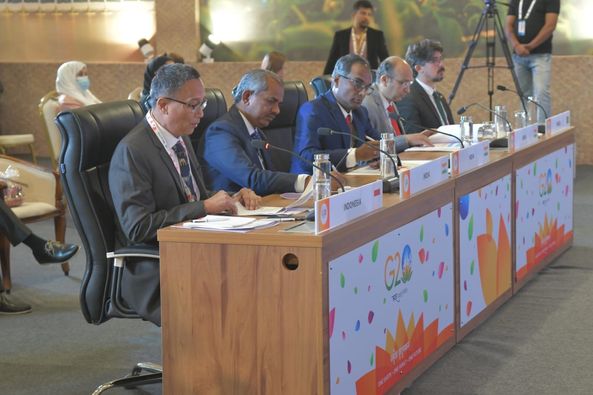The future of the industrial revolution is likely to be around circular economy and bio-economy model, said Secretary, Department of Science and Technology (DST) Dr S Chandrasekhar
The future of the industrial revolution is likely to be around circular economy and bio-economy model, said Secretary, Department of Science and Technology (DST) Dr S Chandrasekhar at the concluding ceremony of the G20 Research and Innovation Initiative Gathering (RIIG) Conference today at Dibrugarh in Assam.
Addressing the event, Dr S Chandrasekhar said that science has a tremendous amount of opportunity to make our life better, sustainable and more creative. The science can also redefine the whole concept of agrarian economy, added Dr Chandrasekhar.
The DST Secretary informed that all countries deliberated to aspire for a Net zero country and to create a circular bio-economy that is resource-efficient and sustainable.
Today, 103 delegates from G20 member countries, nine guest countries and International organisations, along with invited participants from the scientific community participated in the conference.
Earlier in the day, Dr Chandrasekhar said that circular economy and bio-economy are related and instead of looking at them as separate entities, we should aim for mutually beneficial dynamic collaboration between them so they can complement each other.
He said that the integration of circular economy and bio-economy requires a deep understanding of how resources can be used to get the best advantage for sustainable and affordable economic growth.
Dr Chandrasekhar opined that policymakers must take into consideration any potential social or environmental impact which may arise from the implementation of this technology.
The Conference has come at a time when sustainable and circular bio-economy is a priority for many countries. It is increasingly recognised as an important approach for achieving the United Nations’ Sustainable Development Goals and the Paris Agreement on climate change.
A circular bio-economy can help reduce carbon emissions, improve resource efficiency, and create economic opportunities while protecting the environment.

